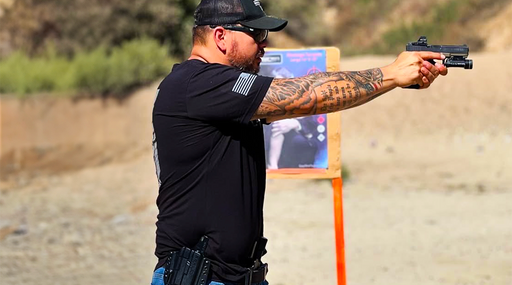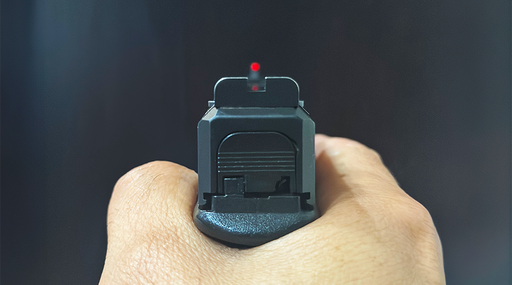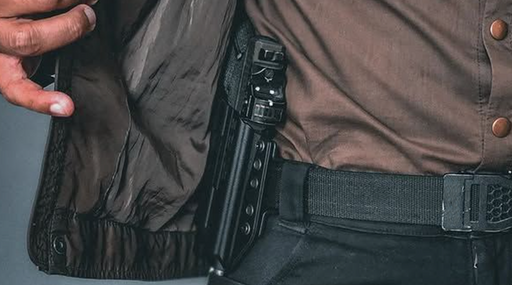The five-point plan for choosing your next concealed carry gun
When the good folks at Bravo Concealment asked me to address the topic of “best concealed carry guns,” they were probably expecting a list that recommended specific guns. But I’m not going to tell you about my latest favorite Glockamole Gen X, the Kim Wesson 40-plus, or the Sigfield K-YA.
Instead, what you’ll find here is an acknowledgement that there are manygreat CCW guns available today, and a five-point scale for deciding if a particular firearm is right for you.
The scale identifies five traits, in order of relative importance, for choosing your everyday carry sidearm. Do your research about these traits online, at the gun store, and double-check with a trusted, experienced gun handler whose mind isn’t married to the concept of one brand or one platform for all, because there is no “one size fits all” when it comes to matching people and handguns.
Look for a gun that’s--
- Dependable
Will the gun go “bang” every single time you press the trigger with the practice and defensive ammunition of your choice? If not, pass it up, no matter how much you like it otherwise!
If you’re simply in love with a particular gun that’s not reliable, at least purchase one that is and use the quirky one for range practice. Unreliable guns aren’t completely worthless inasmuch as they offer practice in malfunction clearances. The gun that may or may not shoot represents just a ROCK, not a GUN, in your self-protection plan!
- Comfortable to wear and draw
My lifestyle would be more comfortable if I had $10 for every time a person told me they gave up carrying concealed or relegated their favorite gun to the truck console and are going dangerously unarmed because it was too bulky, heavy, pointy, or otherwise a pain to carry. Don’t get me wrong, I love a sexy full- or commander-size, steel-framed 1911 in .45 ACP! But carrying one would demand a radical change to my carry method, and deploying it from concealment could prove “catchy” in terms of clothing hanging up on the beavertail. And then there’s weight—“going heavy” can be a strain on your back or hips over time.
There are two solutions to getting comfortable while armed:
- Pick something that’s comfortable to wear every day, and doesn’t take a gargantuan effort to draw from your mode of concealment. Especially if you’re one who buys guns based on looks, understand this: it’s possible to learn to love a gun you initially didn’t find attractive simply because it meets Criteria 1. and 2. in this guide.
Or…
Be unwavering in your commitment to do what it takes to make that big, heavy shooter work for you in everyday carry. Of hundreds of licensed students I’ve followed up with over the years, only one I know of opts for daily on-body, concealed carry with a full-size pistol and is happy with it. Two others, both women, carry full- or mid-size .45s in a purse. Purse carry may be convenient, but it requires a fairly complex set of actions to safety and effectively present the firearm.
If you opt for purse carry, get good instruction on carry position for both the gun inside the purse and the purse on your body, as well as drawing and exercising muzzle control for yourself and the public. Even within the gun-promoting community, egregious safety errors connected to purse carry are common. To ignore the development of gun/purse handling skills in favor of feeling secure thanks to the mere presence of a gun is negligence.
- Simple to operate
Any discussion of “safety” that doesn’t put muzzle and finger discipline at the forefront is really about something else, whether the topic is gun legislation or gun function! The actions you perform in drawing and firing, I believe, should entail as few steps as necessary. After all, we’re talking about criminal encounters that often begin and end in five seconds or less! How much stuff do you really want to do if shooting is necessary to preserve life?
The quickest way to score a point in the Simple to Operate column is to select a gun that has no safety levers that you must consciously switch off before firing. Remember, muzzle and finger control are your primary measures of safety, along with a holster that adequately protects the trigger guard and keeps the gun securely in concealment.
For some, passive safety measures like a grip safety or double-digit trigger pull weight are also obstacles to getting the gun into action in a timely manner. My hollow-palmed hands cause a dependability issue with many grip safety-equipped firearms—and yes my grip is high and tight. To overcome this problem, I’ve been known to keep the grip safety wrapped in a ponytail holder. Not ideal, but with muzzle and finger discipline, also not risky.
If your handgun of choice does have external safety features, it can still be a great firearm for everyday carry under one condition—that you practice deploying it from concealment, transitioning from safety-on to safety-off, firing accurately, then re-engaging the safety and re-holstering, a few thousand times annually.
Simplicity also includes how well your hands and the grip and controls work as a team. While there are many work-arounds to cope with things like a magazine release that’s out of the natural reach of your thumb, there’s no denying the efficiency and pleasure of operating a gun with controls and functioning that represent a great fit for your unique palms and digits.
- Allows dry fire practice
This is a more specific continuation of Criterion 3. Dry fire practice isn’t harmful to modern concealed carry guns and is the perfect way to boost your accuracy and gun handling skills without having to spend time and money on the range or ammunition. Problem is, some handguns are overloaded with safety feature like a magazine disconnect that prevent dry fire.
Dry fire is an excellent way to not only improve accuracy, but also to get familiar with the feel and function of your handgun. Being unable to dry fire is perhaps a greater risk to safety in the long run—yours, as you won’t have the benefit of practice behind you in a life-or-death moment. That lack of practice can result in the completion of a criminal’s intent, or in a round striking in tragically errant fashion. Either one can ruin your life. Nevertheless, this trait is near the bottom of the scale since live fire remains an option.

- Doesn’t punish you for shooting it
For some folks who’ve had a gun that made them bleed after a couple rounds, this item might deserve top billing rather than being at the end of the list. The truth is, if you practice often enough to be competent across most situations life would throw your way in which a gun is needed, you probably own an easier-to-operate full-size pistol that consumes the bulk of your ammo consumption. But it’s still necessary to be competent on your carry gun, probably a smaller one, too.
Smaller guns of the concealed carry ilk are generally more difficult to manipulate, often requiring fine rather than gross motor skills to do things like rack the slide and secure the slide lock. Their shorter barrels and smaller frames deliver more recoil to the handler, too. Especially for people with nagging hand, wrist, or elbow injuries, excessive recoil can be painful. Even for the best of us, certain little guns with big recoil can blister or slice the hands that hold them after just a few rounds.
Evaluate your pain tolerance and willingness to fight through pain before choosing a high-recoil but concealable gun.
In summary
It’d be hypocritical of me to recommend one handgun over another, as I’ve had the pleasure of carrying at least six different models on a daily basis in the many years I’ve carried concealed. Along the way my skill level, taste in firearms, and understanding of the use of deadly force has evolved. Yours will too, hopefully for the better. Use this scale to evaluate your current or wished-for concealed carry gun. If it falls short on one or more criteria, and decide if you’re dedicated enough to train to overcome that. Unless you’re truly desperate, don’t compromise on dependability. Pretty is as pretty does!
Sidebar for photo: Browning’s Black Label Medallion 1911-180 is lightweight, reliable, and a feast for the eyes. Carrying one will entail consideration for clothing-catching edges, a safety lever, and relatively long profile.
Sidebar for photo: Some popular choices that fit the reliable/simple to operate standard (clockwise from top): the Glock 43, Sig Sauer P365, and Smith & Wesson M&P Shield. All pictured are chambered in 9mm; the Shield is offered in other chamberings.
Sidebar for photo: Comfort is one of the two most important considerations for choosing a carry gun. Here, a Glock 17 is holstered in a Bravo Concealment Torsion holster on the company’s Cinturon belt.
Sidebar for training photo: Are you committed to training regularly and with diligence to accommodate your chosen firearm and method of concealed carry?

Eve Flanigan is a defensive shooting and concealed carry instructor living in the American Southwest. Today she works full time as an instructor and writer in the gun industry. Flanigan loves helping new and old shooters alike to develop the skills needed to keep themselves and their loved ones safe.
























Leave a comment
5 comments
I appreciate you outlining the importance of selecting a concealed carry weapon that is both easy to draw and comfortable to wear. I’m considering enrolling in some CCW lessons with my sister. I’ll be sure to let her know about this so we can choose what’s best for our individual firearms and ammo. http://www.gunshopatlantaga.com/services/
Thank you for explaining that you should choose a concealed carry gun that is comfortable to wear and easy to draw. My sister and I are thinking about taking some CCW classes. I’ll be sure to share this with her so we can make the best choice possible for our respective guns. https://aegisauthority.com/california-ccw
Thank you for explaining that you should choose a gun that is dependable and reliable. My brother has been thinking about taking a concealed carry class and has been wondering what type of gun he should use. I’ll share this with him and see if it helps him to narrow down some of his options. https://aegisauthority.com/california-ccw
The issue of a magazine disconnector when dry firing can be overcome with a Roger’s TRT (tap rack training aid) it fits in the magazine and
prevents the slide lock from engaging when you operate the slide. I use it on striker fired pistols. Very simple and very affordable. Good article, thanks.
I live in Florida, and concealment is always a problem. Your descriptions of the issues are spot on. My original purchase for carry was an XDs 9mm, but I found I just didn’t like carrying it. Recently my choice had been a Glock 42 which I carry regularly. I’m about to trade my XDs for a P365 which I think will be my carry choice after I put at least 500 rounds through it. I’ve already ordered one of your holsters for it.